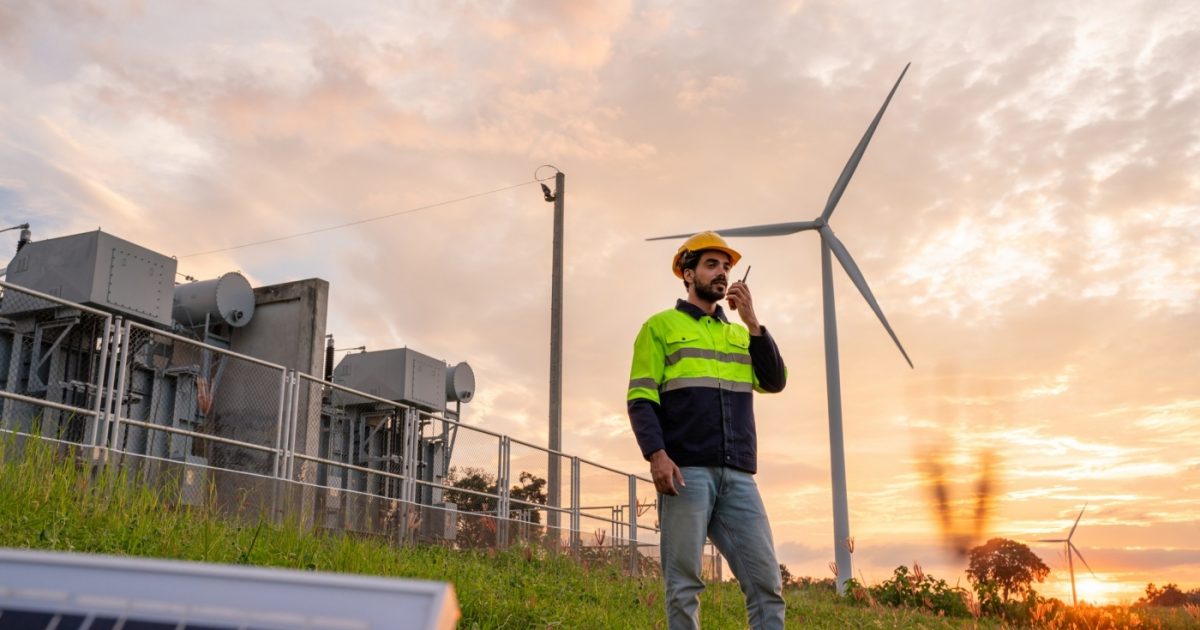Reinstating the Bank of England’s climate remit would be a win for green finance but Labour must go further to achieve their Green Prosperity Plan
Last week, Rachel Reeves announced that a Labour government would reinstate climate change as a policy priority for the Bank of England (something NEF has advocated for and would warmly welcome!). While Labour has watered down its flagship £28bn green investment pledge, by prioritising green finance, they could still strive to meet the goals of their Green Prosperity Plan. Labour’s Financing Growth review contained some promising ideas to increase private finance for the green transition. However, their policies will need to go further if they want to fulfil their missions to cut energy bills for good, make the UK energy secure, improve living standards, generate one million good jobs, and tackle the climate crisis.
Reinstating climate change as a policy priority for the Bank of England is the first and most obvious action the next government should take. The Bank has a huge amount of power in the financial system, both through monetary policy and as a regulator. In 2023 Jeremy Hunt decided to remove climate change as a policy priority for the Bank, which has already had harmful consequences. Andrew Bailey, the governor of the Bank, stated that funding for climate research and policy development has now been reduced. Putting climate change back on the priority list would direct the Bank to develop measures to help bring the financial system into line with net zero (without compromising its primary mandates to control inflation and ensure financial stability).
One such policy is NEF’s proposed green term funding scheme. This would bring down energy bills, improve energy security, and help fight climate change. In the scheme, the Bank of England would offer a lower interest rate to commercial banks to fund loans to renewable energy and retrofit projects, provided the banks pass on the rate reduction to their customers. A renewables company could then access a cheaper loan to build a windfarm, or a homeowner could access a cheaper loan to install a heat pump, for example. This would lead to more cheap renewable energy produced in the UK and less reliance on global gas markets. Similar policies are already in operation in Japan and China, and the Bank of Korea and senior figures at the ECB have spoken out in favour of such schemes.
“Putting climate change back on the priority list would direct the Bank to develop measures to help bring the financial system into line with net zero.”
The next government should also explicitly encourage the Bank to update its collateral framework and supervisory measures, so that investments in fossil fuels and other harmful activities are penalised rather than encouraged. The European Central Bank has made progress in these areas, correctly identifying that the mismanagement of climate risks poses a danger to financial stability (although there are still notable shortcomings to the ECB’s policies). If Labour wants the UK to become a global green finance capital, the Bank of England has a lot of catching up to do.
Labour’s financial services review, Financing Growth, successfully identifies other areas where interventions could remove bottlenecks to green investment and speed up the transition. These include unblocking the publication of the UK’s Green Taxonomy, that will define what qualifies as an environmentally sustainable investment. This is a necessary measure to enable many other green finance policies. In particular, the report recognises that buildings retrofit (making our homes and workplaces more energy efficient) is an area where the market is currently failing to deliver. The proposed introduction of property-linked financing (PLF), where loans for green projects are tied to the property rather than the owner, is a promising idea that could help stimulate demand. The Green Finance Institute estimate that PLF could increase green investment by £52 – 70bn.
Unfortunately, there are areas of Labour’s review where their approach falls far short of what is required to achieve the net zero transition. To genuinely shift the dial on green finance, the next government also needs to level up the UK’s state-owned financial institutions (SOFIs), such as the UK Infrastructure Bank (UKIB) and the British Business Bank (BBB). A barrier to this is the UK’s current measure of national debt, which is different from most other countries in the world, including across the EU. This difference effectively prevents the UK’s SOFIs from fulfilling their potential as national investment banks. Meanwhile, other countries have state-owned banks able to provide huge amounts of funding for green development, for example the KfW in Germany. Switching our debt-measure to the international standard would empower our SOFIs to raise their own money and power up their investments. For example, the British Business Bank could then offer significant financial support to help UK businesses to decarbonise.
Ultimately, greening finance can’t fully compensate for insufficient government investment. Fiscal policy still has a crucial role to play, and Labour should reinstate its full green investment pledge. However, Labour can still make some progress on its Green Prosperity Plan by targeting green finance measures to harness the power of private investment. Reeves’ announcement on the Bank of England is a good start, but there’s much further to go.
Image: iStock


